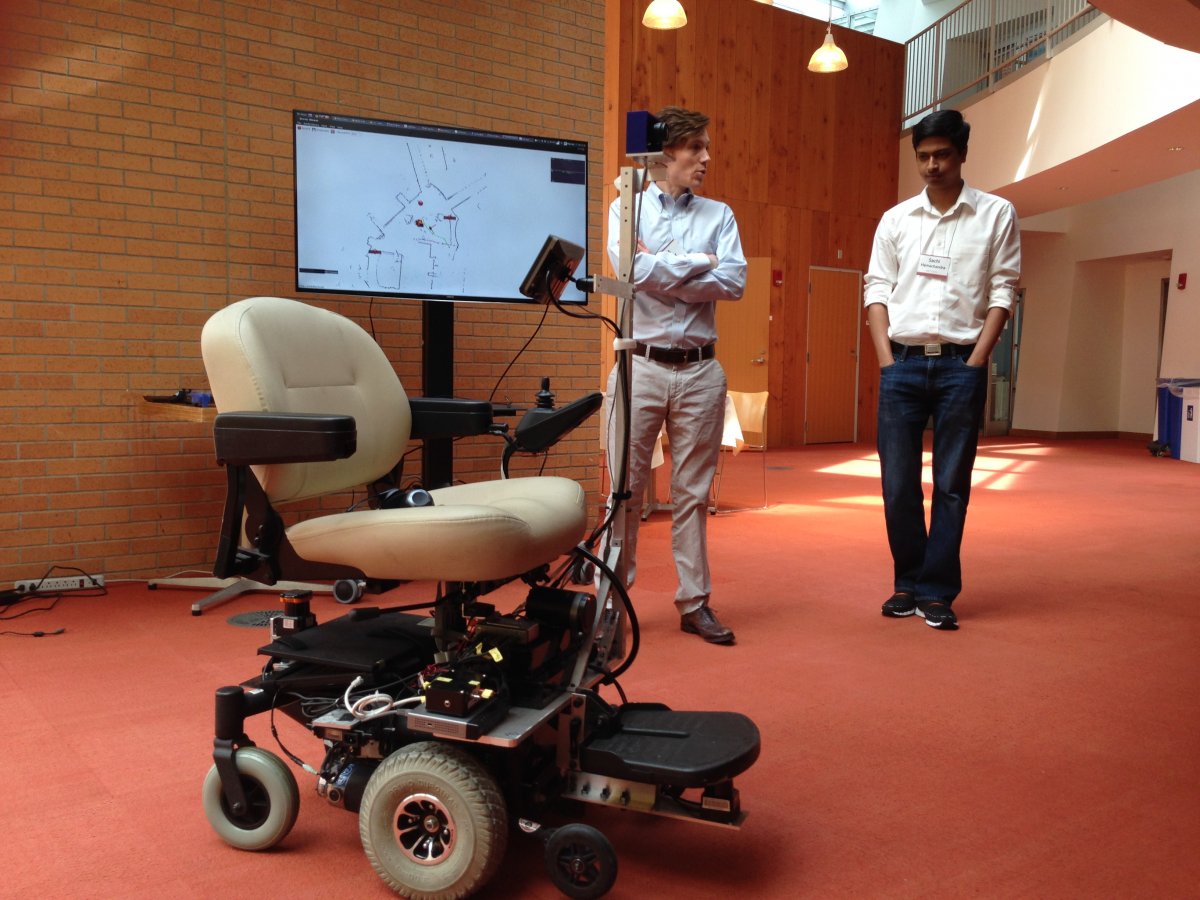
MIT’s Robust Robotics Group has developed a robotic wheelchair that understands vocal commands and can independently navigate around your house. Team leaders Nicolas Roy and Seth Teller have been working on this project since 2005, perfecting the technology behind this endeavor.
Users announce their commands through a Bluetooth enabled headset, microphone, and speaker. Onboard the autonomous wheelchair platform there is a front laser scanner, rear laser scanner, and laptop. To gain mobility safely, the wheelchair uses internal rangefinders so the wheelchair can prevent crashing into anything in its path. The internal power and microcontroller fit the system quite well. There are Wi-Fi localization capabilities allowing the wheelchair to be informed about its location and it can gain geopositional knowledge of the area that the wheelchair is operating in. But first, the user need to walk the robotic wheelchair around the area it’s going to navigate around in order to build a computerized “mental” map of the house. There is an installed application of voice-commandable autonomous navigation for added assistance.
The team employed Amazon’s Mechanical Turk platform for this project to enable the wheelchair’s understanding of basic commands. This service allows people to help them with projects that computers aren’t yet smart enough to complete like select the best aesthetic photos or compile product codes. The wheelchair builds on its vocabulary when you interact with it. Mechanical Turk provides users' commands like “take me to the kitchen.” Mechanical Turk workers watched videos of the wheelchair performing various tasks and wrote all possible corresponding commands. When the wheelchair in the video was wheeling to the kitchen, the Mechanical Turk people would write “take me to the kitchen” in order to increase the wheelchair’s vocabulary.
The wheelchair can link to smart devices like mobile phones or tablets, and can be programmed to keep a stored map of the environment it is operating in. This device could revolutionize mobility for elders once this technology is mass-produced and distributed. So far, this technology has been implemented in The Boston Home care center to provide beneficial assistance to people suffering from neurological disorders.
Story via MIT, Business Insider
Advertisement
Learn more about Electronic Products Digital





